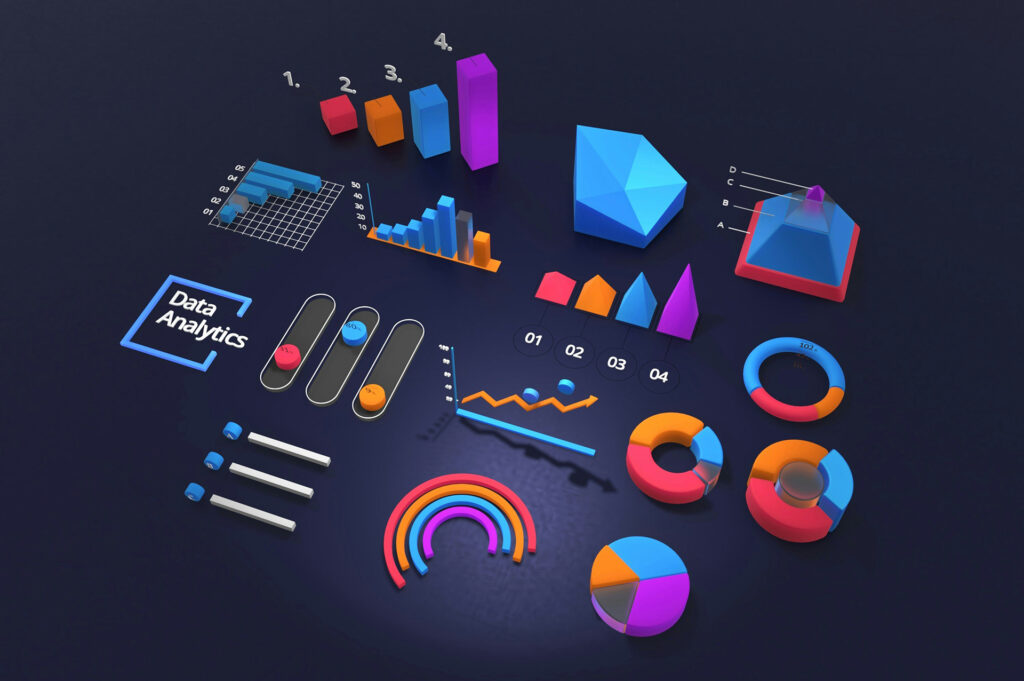Five high-impact technologies every merchant should be piloting now
Retail is a data firefight in 2025. Every tap, scan, and step inside a store now streams into the cloud (and sometimes straight to an edge device). The merchants pulling ahead aren’t hoarding dashboards – they’re wiring specific business analytics tools into daily decisions. Below are the tools – and the tech behind them – that are proving most valuable on the front lines of retail.
1. Spatial Analytics
Plain-language snapshot: Think of spatial analytics as a living heat map of your store. By combining data from Wi-Fi, cameras, kiosks and mobile devices, it shows exactly where shoppers move, pause, and purchase.
Location intelligence is no longer limited to outdoor GPS. Retailers are layering in-store footfall, dwell-time, and heat-map data onto interactive floor plans to reveal where shoppers linger and why they convert. The global geospatial analytics market is projected to climb from US $117.2 billion in 2024 to US $327.8 billion by 2029 (knowledge-sourcing.com). Solutions such as MapVX fold indoor navigation, targeted marketing tools, real-time occupancy, and usage/traffic data into a single solution – helping merchandisers re-zone layouts, target on-map promotions, prove ROI, and justify rent differentials.
- Pinpoint ROI: Identify dwell-time “hot spots” to prove promotional impact.
- Rapid A/B tests: Shift end-caps or signage and watch foot traffic reroute within hours.
- Risk planning: Model evacuation or crowd-management scenarios before busy seasons.
To learn more about this game changing technology, check out our free guide on unlocking the potential of your business with spatial analytics.
2. Predictive Analytics & Machine Learning
Plain-language snapshot: Predictive analytics studies yesterday’s sales, weather, and promotions to forecast tomorrow’s demand, churn, and optimal price points – so you can act before problems hit.
From demand forecasting to personalized recommendations, predictive models translate past transactions into tomorrow’s inventory and marketing moves. Analysts project the global market to reach US $147.3 billion by 2034, up from US $22.3 billion in 2025 (dimensionmarketresearch.com). Key capabilities include AutoML pipelines, time-series forecasting, and propensity scoring that pushes next-best offers to individual shoppers.
- Slash stock-outs: Align shelf inventory with near-term demand signals.
- Smart markdowns: Identify items heading toward overstock and price dynamically.
- VIP retention: Flag customers with high churn probability and trigger save-offers instantly.
3. Real-Time Streaming & Edge Analytics
Plain-language snapshot: Streaming analytics digests sensor and POS data the instant it’s produced, while edge devices crunch numbers inside the store – so insights arrive while customers are still in the aisle.
Click-and-brick environments generate torrents of sensor, POS, and mobile-app events. Streaming engines process these feeds in milliseconds, letting retailers spot shelf outages or queue bottlenecks before they hurt sales. The global streaming analytics market was valued at US $23.4 billion in 2023 (grandviewresearch.com) and is expected to hit US $73.3 billion by 2030 (meticulousresearch.com). Coupled with 5G and in-store edge devices, brands can trigger dynamic pricing or digital-signage updates while the customer is nearby.
- Real-time alerts: Auto-page staff when freezer temps cross safety thresholds.
- Dynamic promos: Push discounts to digital shelf labels the moment inventory runs long.
- Queue smoothing: Redirect shoppers to shorter lines via app notifications if wait-times spike.
4. Augmented Analytics & Generative AI
Plain-language snapshot: Augmented analytics lets you ask a dashboard “Why did basket size dip yesterday?” in plain English, then uses generative AI to narrate the answer and suggest fixes.
Natural-language query, automated insight narration, and AI-driven “why” analysis are shrinking the skills gap between data scientists and store managers. The market is expected to rise from US $15.26 billion in 2025 to US $87.03 billion by 2032 (fortunebusinessinsights.com). For retail, that means assistants that explain anomalies or draft campaign copy and creative variations on the fly.
- Ask-it-like-you-talk: Get instant answers without SQL.
- Auto-explain anomalies: The system spots unusual return spikes and suggests causes.
- Creative co-pilot: Generate headline, image, and CTA variants for A/B tests in seconds.
5. Customer-Journey & Omnichannel Analytics
Plain-language snapshot: Journey analytics stitches every interaction – Instagram click, in-app chat, in-store scan – into one timeline, so you can see how each channel nudges a sale forward (or loses it).
Today’s shopper hops from Instagram Reel to curb-side pick-up in hours. Journey analytics unifies those touchpoints, attributing revenue to each step and surfacing friction points. Researchers expect the global market to expand from US $15.0 billion in 2024 to US $52.2 billion by 2033 (imarcgroup.com). Retailers then feed journey scores into loyalty apps, call-center scripts, and personalized in-store offers.
- Spot drop-offs: Identify the exact step – ad click, checkout, pickup – where customers abandon purchases.
- True attribution: Measure how TikTok buzz plus an in-store demo jointly lift sales.
- Personalized nudges: Trigger loyalty-tier bonuses when a shopper nears a churn threshold.
Quick Priorities for Retail Leaders Looking to Implement Business Analytics Tools
- Audit data readiness against these five tech pillars – spatial data usually offers the fastest win.
- Run pilot programs in a controlled cluster of stores before network-wide rollout.
- Link KPIs to revenue: e.g., dwell-time vs. basket size or predictive forecast accuracy vs. stock-outs.
Want to see how spatial analytics can reshape your floor plan and ad revenue? Book a MapVX demo and turn shopper movement into measurable profit.



